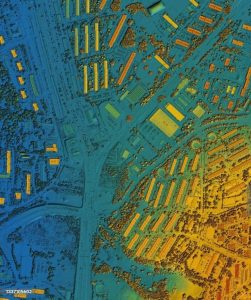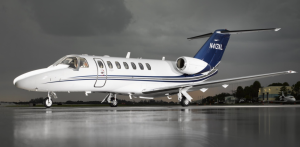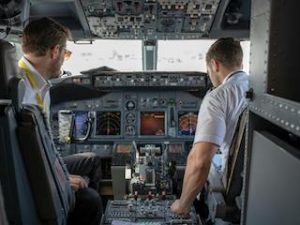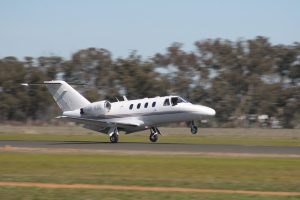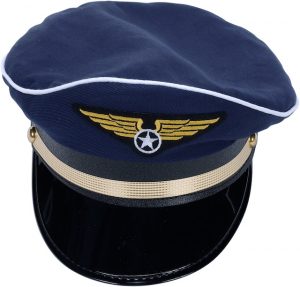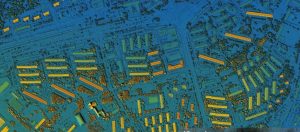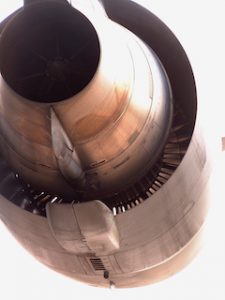5 Benefits Of An Aircraft Simulator
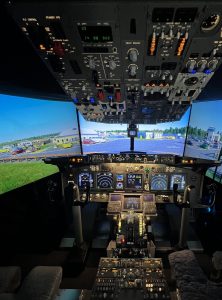 In the ever-evolving world of aviation, aircraft simulators have emerged as a cornerstone of both pilot training and aviation enthusiasts’ experiences. These advanced systems offer a remarkable simulation of the flying experience, providing users with a range of benefits from professional training to recreational enjoyment. This comprehensive guide explores what aircraft simulators are, their advantages, key features to consider, and what the future holds for this fascinating technology.
In the ever-evolving world of aviation, aircraft simulators have emerged as a cornerstone of both pilot training and aviation enthusiasts’ experiences. These advanced systems offer a remarkable simulation of the flying experience, providing users with a range of benefits from professional training to recreational enjoyment. This comprehensive guide explores what aircraft simulators are, their advantages, key features to consider, and what the future holds for this fascinating technology.
Understanding an aircraft simulator
An aircraft simulator is a sophisticated system designed to replicate the experience of flying an aircraft. These simulators can range from simple desktop applications to complex setups featuring full-motion platforms and high-definition visual environments. They are used in various fields, including pilot training, aircraft design, and personal entertainment.
Aircraft simulators create a virtual environment where users can interact with realistic representations of aircraft controls, systems, and flight dynamics. They offer an opportunity to practice flying techniques, learn about different aircraft models, and experience a wide range of flying conditions—all from a safe and controlled environment.
Benefits of aircraft simulators
1) Superior pilot training
The most significant benefit of aircraft simulators is their role in pilot training. Simulators provide a safe and controlled environment where aspiring pilots can practice and refine their flying skills. This includes handling routine operations, managing in-flight emergencies, and dealing with various weather conditions.
By using simulators, pilots can gain practical experience without the risks associated with actual flight training. They can simulate complex scenarios and perform repetitive practice, which helps in building confidence and proficiency. Additionally, simulators offer a cost-effective training solution compared to real-world flight hours.
2) Cost-efficiency
For both professional training and personal enjoyment, aircraft simulators represent a cost-effective solution. Real-world flying involves significant expenses, including fuel, maintenance, and aircraft rental. In contrast, aircraft simulators require a one-time investment in software and hardware, making them an economical choice for individuals and organizations.
Simulators allow users to experience various types of aircraft and flying conditions without incurring the high costs associated with actual flying. This cost efficiency makes them accessible to a broader audience, including hobbyists and aviation enthusiasts.
3) Safe Environment for skill development
Simulators offer a unique advantage in providing a safe environment for practicing flying skills. Users can experiment with different maneuvers, troubleshoot system failures, and practice emergency procedures without the risks associated with real flight. This safety aspect is crucial for both novice pilots and experienced aviators looking to refine their skills.
By practicing in a simulator, pilots can learn how to handle unusual situations and improve their decision-making abilities. This preparation can be invaluable when transitioning to actual flight, where quick thinking and effective handling of emergencies are essential.
4) Enhanced learning and exploration
Aircraft simulators offer an engaging way to learn about aviation and explore various flying experiences. Users can operate different aircraft models, from small general aviation planes to large commercial airliners. They can also simulate flights in diverse environments, such as navigating through mountainous terrain or performing approaches in challenging weather conditions.
This flexibility allows users to gain a deeper understanding of aircraft systems, flight dynamics, and navigation techniques. It also provides an opportunity to explore different aspects of aviation that might not be easily accessible through traditional training methods.
5) Maintenance of skills
For experienced pilots, maintaining flying skills is crucial. Aircraft simulators offer a convenient way to keep skills sharp and stay current with procedural changes or new technologies. Regular simulator practice helps pilots remain proficient in handling various flight situations and ensures they are well-prepared for real-world flying.
Simulators can be used to review and practice specific maneuvers, refresh knowledge on aircraft systems, or familiarize oneself with new avionics. This ongoing practice contributes to overall flight safety and performance.
Features of aircraft simulators
1) Realistic flight dynamics
The core of any high-quality aircraft simulator is its realistic flight dynamics. This feature encompasses accurate representations of aircraft handling, aerodynamics, and control responses. A simulator with realistic flight dynamics will provide a more authentic flying experience, allowing users to feel the nuances of different aircraft types and their handling characteristics.
2) Detailed aircraft models
For a truly immersive experience, aircraft simulators should include detailed models of various aircraft. This includes accurate cockpit layouts, instrument panels, and avionics systems. Detailed aircraft models allow users to familiarize themselves with the controls and systems of different aircraft, which is essential for both training and recreational purposes.
3) High-definition graphics
Modern aircraft simulators employ advanced graphics technology to create visually stunning and realistic environments. High-definition visuals enhance the simulation by providing detailed landscapes, accurate weather effects, and lifelike airport layouts. This visual realism contributes to a more engaging and immersive flying experience.
4) Comprehensive navigation systems
Effective navigation systems are crucial for a realistic flight simulation. Aircraft simulators should feature detailed representations of GPS systems, radar, autopilot functions, and communication tools. These systems allow users to practice navigation and flight management skills in a simulated environment, contributing to overall proficiency and preparedness.
5) User-friendly interface
A user-friendly interface is essential for ensuring that both novice and experienced users can easily navigate the simulator. The interface should offer intuitive controls and straightforward access to various features and settings. An effective interface enhances the overall user experience and allows for a more focused and enjoyable flying experience.
6) Multiplayer and online capabilities
Many modern aircraft simulators offer multiplayer and online features, allowing users to fly with others in real-time. This capability adds a social dimension to the simulation, enabling users to collaborate, compete, or simply share their flying experiences with a global community. Multiplayer features can enhance the enjoyment of the simulation and foster a sense of camaraderie among users.
Choosing the right aircraft simulator
1) Define your purpose
When selecting an aircraft simulator, it’s important to define your primary purpose. Are you looking for professional training, recreational flying, or a combination of both? Professional training simulators often come with advanced features and high levels of realism, while recreational simulators might focus on ease of use and affordability.
2) Consider your budget
Aircraft simulators vary widely in price, from affordable desktop versions to high-end systems with full-motion capabilities. Determine your budget and consider how much you are willing to invest in the simulator. Remember that higher-priced simulators often offer more advanced features and greater realism.
3) Check system requirements
Ensure that your computer or hardware setup meets the system requirements for the simulator you are considering. High-quality simulators may require powerful processors, ample memory, and advanced graphics cards. Verify the specifications and ensure compatibility before making a purchase.
4) Research reviews and recommendations
Research and read reviews from other users to gauge the performance and quality of the simulator. Look for recommendations from aviation professionals or enthusiasts to find a simulator that aligns with your needs and expectations. User reviews can provide valuable insights into the simulator’s features and overall user experience.
5) Evaluate support and updates
Consider the level of support and updates provided by the simulator developer. Regular updates can enhance the simulator’s functionality and address any issues or bugs. A responsive support team can assist with technical problems and ensure a smooth experience with the simulator.
Future of aircraft simulators
The future of aircraft simulators is bright, with ongoing advancements in technology promising even more immersive and realistic experiences. Innovations in virtual reality (VR) and augmented reality (AR) are expected to further enhance the simulation experience, offering users a more lifelike sense of being in the cockpit.
VR headsets and motion platforms will provide a heightened sense of immersion, allowing users to feel as though they are actually flying an aircraft. AR technology may introduce new ways to interact with the simulation environment, offering additional layers of information and interactivity.
Artificial intelligence (AI) is also poised to play a significant role in the evolution of aircraft simulators. AI-powered systems could offer personalized training experiences, adaptive challenges, and intelligent feedback, making simulations more effective and engaging. AI could also enhance the realism of flight dynamics and environmental interactions, further improving the overall simulation experience.
Conclusion
Aircraft simulators have become an essential tool in the aviation industry, offering a range of benefits from professional training to personal enjoyment. Their realistic flight dynamics, detailed aircraft models, and advanced features provide users with a valuable platform for learning, practicing, and exploring the world of aviation.
By understanding the key features of aircraft simulators and considering factors such as purpose, budget, and system requirements, users can select the right simulator to meet their needs. As technology continues to advance, the future of aircraft simulators holds exciting possibilities, promising even more immersive and realistic flying experiences.
Whether you’re an aspiring pilot, a seasoned aviator, or an aviation enthusiast, aircraft simulators offer endless opportunities for discovery and growth. Embrace the world of simulation and take your flying experience to new heights with the power of modern aircraft simulators.



